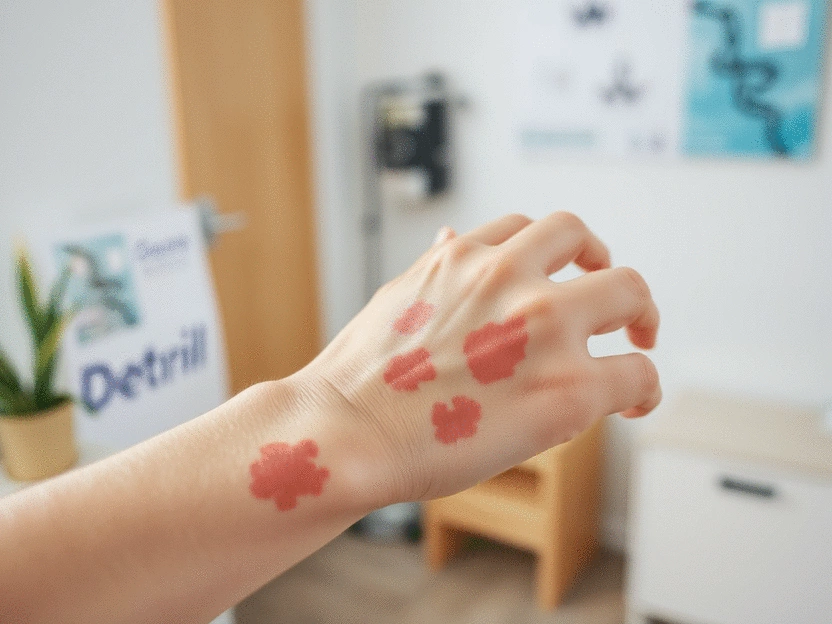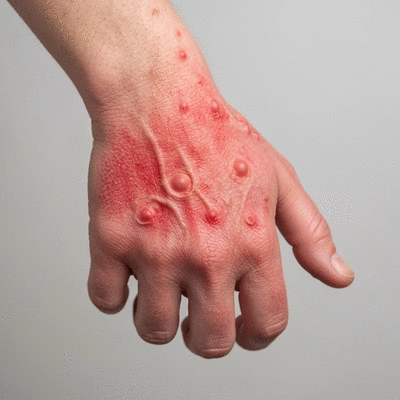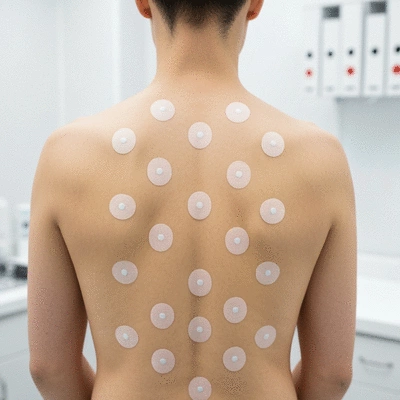Allergic Contact Dermatitis
Immune response to specific allergens (e.g., Nickel, fragrances, latex, preservatives).
Have you ever felt the frustrating sting of itchy skin, only to realize it was a reaction to something as mundane as a new soap? Understanding contact dermatitis can be your first step toward relief and healthy skin. Here are the key insights you can gain about this common condition.
This visual outlines the two main types of contact dermatitis and the key steps involved in diagnosing the condition.
Immune response to specific allergens (e.g., Nickel, fragrances, latex, preservatives).
Skin barrier damage from harsh substances (e.g., Soaps, detergents, solvents, prolonged water exposure).
Clinical Examination
Patient History (Symptoms, exposures, medical history)
Patch Testing (Identifies specific allergens)
Biopsy / Skin Culture (If severe or unresponsive)
Have you ever experienced itchy, red patches on your skin after using a new soap or coming into contact with a specific material? You might be dealing with contact dermatitis, a common skin condition that can be both frustrating and uncomfortable. Let’s break it down together so you can better understand what contact dermatitis is and how to manage it effectively.
Contact dermatitis occurs when the skin reacts to certain substances or allergens. This reaction can happen in two ways: through an irritant or an allergen. Understanding the difference between these triggers is vital for managing symptoms and preventing flare-ups.
Contact dermatitis is classified into two main types: allergic and irritant. Allergic contact dermatitis happens when your immune system responds to a specific allergen, while irritant contact dermatitis results from damage to the skin barrier due to harsh substances. Both forms can cause significant discomfort, but recognizing the triggers is the first step towards relief!
By understanding these differences, you can take proactive steps to avoid contact dermatitis and maintain healthy skin.
Symptoms of contact dermatitis can vary widely, but they typically include redness, swelling, and itching in the affected areas. In some cases, blisters or dry, flaky skin may also appear. If you notice any of these symptoms after exposure to a potential irritant or allergen, it's essential to take action quickly.
Being aware of these symptoms can help you seek treatment sooner and avoid further irritation. If you suspect you have contact dermatitis, jot down when these symptoms arise and what you were doing or using. This information can be incredibly helpful for your healthcare provider!
Understanding what triggers your contact dermatitis is crucial for effective management. Common allergens can be found in everyday products, while irritants are often chemicals that disrupt the skin barrier. Here are some common culprits:
Keep an eye on your skin reactions in relation to these substances. Identifying your personal triggers will empower you to make choices that protect your skin and minimize symptoms in the future. For more comprehensive information on this topic, the National Eczema Association provides detailed resources on contact dermatitis, including common triggers and management strategies.
To effectively manage contact dermatitis, consider keeping a detailed journal of your skin reactions. Note the products you use and any environmental factors that may contribute to flare-ups. This proactive approach can help you and your healthcare provider pinpoint specific allergens and irritants, leading to more tailored and effective treatment options.
When it comes to managing contact dermatitis effectively, accurate diagnosis is crucial. The journey often starts with a thorough clinical examination, where a healthcare professional evaluates the affected areas of your skin. This initial step can reveal a lot about the condition, helping to differentiate between allergic and irritant responses.
It’s essential to provide as much information as possible about your symptoms during this examination. Remember, the more detailed the information you provide, the easier it will be for your healthcare provider to help you!
During a clinical examination, your doctor will inspect your skin for signs of contact dermatitis. This can include redness, swelling, and blisters. They may ask you specific questions about the timing of your symptoms and any potential exposures to allergens or irritants.
This information helps pinpoint the possible allergens or irritants involved. By actively participating in this process, you can empower yourself and take charge of your health!
Your medical history plays a vital role in diagnosing contact dermatitis. Make sure to share any previous skin issues, allergies, or family history of skin conditions. This context can guide your healthcare provider to make more informed decisions.
Consider also discussing:
This comprehensive overview will help create a clearer picture of your individual case, making it easier for your doctor to assist you in the management of your contact dermatitis. For a deeper understanding of the diagnostic process, including the importance of patient history, the National Center for Biotechnology Information offers extensive details on contact dermatitis diagnosis.
If your doctor suspects that an allergen is causing your contact dermatitis, they may recommend patch testing. This process involves placing small amounts of different substances on your skin to see if any cause a reaction. It’s a safe and effective way to identify specific triggers!
Here's what you can expect during the patch testing:
This simple procedure can provide valuable insights into what exactly is provoking your condition, guiding your future treatment.
After patch testing, your doctor will interpret the results with you. They’ll explain any reactions you might have had and what that means for your skin health. Understanding these results can help you avoid future contact with known allergens, making this a vital component of effective management.
In some cases, a biopsy or skin culture may be necessary to confirm the diagnosis. This is especially true if your symptoms are severe or do not respond to standard treatments. A biopsy involves taking a small sample of your skin for laboratory analysis, which can help rule out other conditions.
Although this might sound intimidating, it can provide answers that will lead to more effective treatment options!
In addition to patch testing, other forms of allergy testing may be recommended, such as blood tests or skin prick tests. These tests can help identify environmental allergens that might be affecting you. Ultimately, knowing what you’re allergic to is key to managing your contact dermatitis effectively.
With the right diagnosis and a thorough understanding of your triggers, you can take active steps towards healing and maintaining healthy skin.
Here is a quick recap of the important points discussed in the article:


